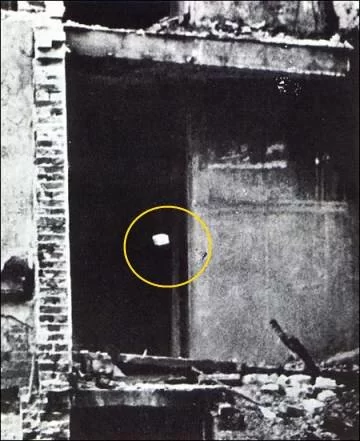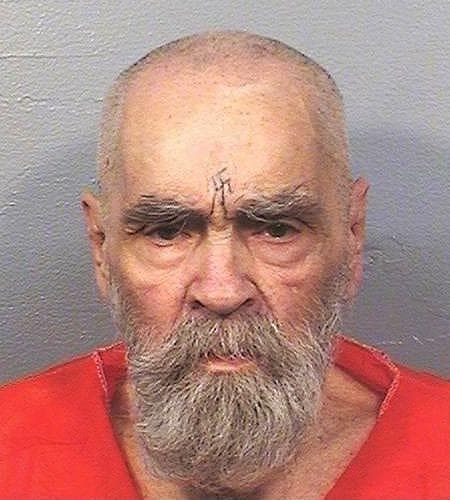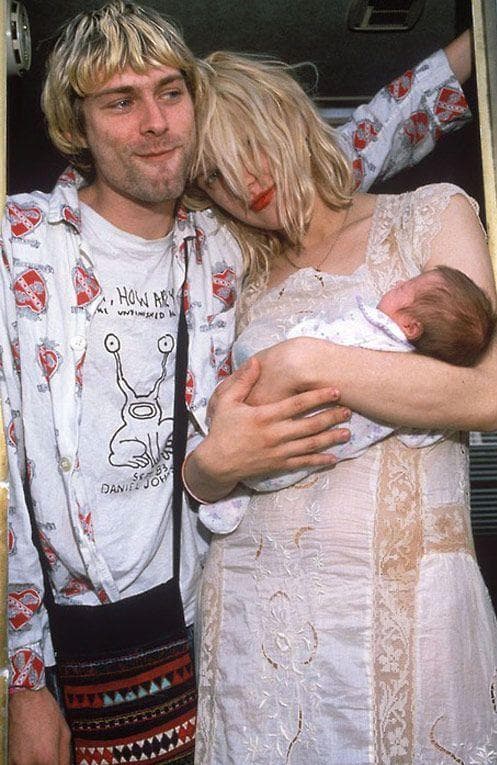-
(#10) The Crescent Hotel
The Location
The Gothic style Crescent Hotel of Eureka Springs, Arkansas, is sometimes called the "Grand Old Lady of the Ozarks," and is often listed as the most haunted place in all of the Ozark Mountains (a location known for its colorful folklore.) The hotel and spa was designed by famed Missouri architect Isaac Taylor and built in 1886. Eureka Springs had recently become infamous as the home of "healing spring waters," which were believed to have curative properties for all variety of ailments. Tourism to the area also got a boost when a stop on the newly-built Frisco Railroad was built close by.
Interest in the resort waned by the turn of the century, after it became clear that the springs - though delightful for holiday goers - didn't actually help cure anything. It has been run in the intervening years alternatively as a hotel and health clinic, and is currently open as a spa and resort.
The Legend
Rumors and stories about hauntings at The Crescent started as soon as construction began. It's said that one of the workers - in most accounts, a stonemason named Michael - plunged from the roof to his death, landing in the spot currently occupied by Room 218. Naturally, strange noises have been reported in this room over the years by guests.
Most of the horror stories surrounding The Crescent concern the years it was operated by a charlatan named Norman Baker. Baker - who was not a licensed physician - intended to use The Crescent as a clinic for people with cancer.
Local legends sprung up around the clinic, however, about Baker's cruel and gruesome treatments. Baker was arrested in connection with the scheme in 1940 and did 4 years in prison, abandoning the hospital thereafter. But it's said that the ghosts of his tormented patients still linger there, most famously a nurse named Theodora. There is also a ghostly cat named Morris.
But Is It True?
The Crescent is a popular location for TV shows and documentaries about ghost hunters, and has appeared on Sci-Fi Channel's Ghost Hunters, NBC's Today Show, A&E's Haunted Road Trips and elsewhere. It's important to bear in mind, though, that much of The Crescent's business depends on the fascination with its haunting, so it's in everyone's financial best interests to make sure there are an appropriate number of "sightings."
As well, Baker was never charged with torturing or brutalizing patients, merely with defrauding them.
-
(#8) Borley Rectory
- Victorian architecture
The Location
Borley is a small town in Essex, England, near the border with Suffolk on the eastern coast of the country. In 1863, the location became home to a church (also called Borley) which had a large rectory on the grounds built by its first recortor, Reverend Henry Dawson Ellis Bull. According to later paranormal investigators, there was ghostly activity on the property - some which was connected to tragedies that happened centuries earlier.
The Legend
The origin of the ghostly nun story dates back to the site's original purpose, as a monastery - a claim that has not been proven by historical records. Supposedly, a monk from the monastery carried on an affair with a nun from a nearby convent. When the couple were found out, the monk was beheaded and the nun walled up inside the cellar, where she died.
Reverend Bull's own family reported seeing the sorrowful ghost nun haunting the grounds in 1900, and the nun appeared to servants, villagers, and others who visited Borley Rectory. After Reverend Bull died, his own ghost was reportedly sighted.
In the late 1920s, Reverend Guy Eric Smith and his family lived at the Borley Rectory for a year and experienced a great deal of paranormal phenomena. They invited the then-noted paranormal investigator Harry Price to inspect the rectory. Price claimed to discover violent, chaotic poltergeist activity. Reverend Smith and his wife moved out.
The next Reverend to move in was Lionel Foyster, who arrived at the rectory with his beautiful wife, Marianne. The spirit of the rectory appears to have taken a liking for Marianne, singling her out for attention and allegedly even writing messages on the walls for her. (One example: "Marianne please help get.")
Foyster arranged then to have the home exorcized of evil spirits, which is said to have worked for a time. But soon enough, the vengeful spirits returned, attacking Foyster's child, turning wine to ink, and other horrors. The Foyster family moved out of the rectory shortly after.
Harry Price, still intrigued by the strange phenomena happening at the rectory, rented it himself in 1937 and began a series of tests and experiments meant to determine exactly what was happening at Borley Rectory. A year after Price stayed there, the rectory burned down. Price returned to inspect the grounds in 1943 and claims to have found a jawbone that could have belonged to a nun.
But Is It True?
Harry Price's team logged a large amount of research and observations relating to their time spent at Borley Rectory, and a number of photographs of spirits came out of the period.

As well, a number of the original individuals involved in the Borley legends spoke publicly about their experiences, including Marianne, who suspected that some of the actions credited to the Borley ghost were probably hoaxes or fakes, but still maintained that the house was likely haunted.
It's also extremely unlikely that the story about the ghost nun is accurate, and by the 1930s, this version of events had already been widely discredited. (It's believed to have come from a popular novel of the time by Rider Haggard.) This obviously hurts the believability of all the later stories, as the un-dead nun trapped forever in the rectory walls seemed to have been the original source of all the other legends.
Finally, though a series of exorcisms were undertaken, and Price even found the jawbone amidst the rubble and gave it a proper Christian burial, sightings of ghosts around where the rectory stood continue to this day. What more could this ghost possibly want after centuries of wandering around aimlessly?
-
(#16) The Joshua Ward House
The Location
The present-day Joshua Ward House in Salem, Massachusetts, is an austere three-story brick house built in 1784. However, the house was built on the site of the former home of Sheriff George Corwin, who signed the warrants for arrests and executions during the Salem witch trials.
The Legend
Apparently, as he died, the accused witch Giles Corey cursed Corwin and every sheriff who would come after him in Essex County. Corwin died at the young age of 30 and his wife had him buried in the basement of his own home so as to prevent anyone from disinterring him or desecrating his grave.
In 1981, Richard Carlson bought the building to use for his real estate office. According to one paranormal blogger,
"The burglar alarm would constantly go off at night, getting Richard or another employee out of bed to attend to it. Doors would shut on their own and lights would go on and off, activated by unseen hands. In one particularly interesting incident, an employee had two candlesticks on the fireplace mantle in her office. As she unlocked her office one morning, she noticed that the candlesticks were turned upside down on the mantle, and the candles themselves were actually on the floor, one bent in an 'S' shape, and the other into a 'boomerang' shape, as if they had been melted and manipulated."
Most frightening, an employee was taking photos of everyone who worked in the office to use as holiday decorations. But when he took a photo of one young woman, a terrifying image of a witch turned up instead.
But Is It True?
There are other explanations offered for the so-called "witch photo," but the connection of the house with the Salem witch trials is fact, and no doubt leads to the home's spooky vibe.
-
(#14) The LaLaurie Mansion
The Location
In 1832, the wealthy and glamorous Creole socialite Marie Delphine LaLaurie built an opulent mansion in the French Quarter of New Orleans, where she lived with her third husband, Dr. Louis LaLaurie. Even by the abhorrent standards of the time, Madame LaLaurie was considered to be exceptionally cruel to her slaves, so much so that nine of her slaves were confiscated by law enforcement (though LaLaurie set up her relatives to secretly buy them back and return them to her).
Rumors continued to swirl about LaLaurie, until a kitchen fire in 1834 revealed the terrible truth. Firefighters found the LaLaurie's 71-year-old cook chained to the stove. The cook confessed she had set the fire on purpose in desperation to avoid being sent to the attic, where she knew terrible tortures took place.
When firefighters bust into the attic, they witnessed unimaginable atrocities. Slaves had been chained and subject to terrible, disgusting tortures and mutilations.
Madame LaLaurie escaped punishment and fled the house, never to be seen again.
The Legend
Following the Civil War, the now-abandoned LaLaurie house was used for several purposes, including a school, a furniture store, and apartments, but none lasted very long. The mansion was eventually converted into an apartment building, where occupants reported a large amount of supernatural activity, such as the ghosts of former slaves.
But Is It True?
None of the supernatural stories surrounding the apparently cursed mansion have been conclusively proven, of course, but it is a popular spot for New Orleans ghost tours and is featured in horror film and TV.
-
(#3) Whaley House
The Location
Located in San Diego, California, the Whaley House was built over the site where James Robinson (nicknamed "Yankee Jim") was executed in 1852 after a conviction of grand larceny. A few years after the hanging, Thomas Whaley purchased the land and constructed the home for his family. (Hence the name.)
The Legend
Yankee Jim was a relatively infamous character in the area. Eventually, he and two other men were arrested for stealing a boat, and he was condemned to die. On the day of the execution, Yankee Jim was said to have swung like a pendulum, going back and forth for an hour before he finally died. Thomas Whaley was there to witness it.
After moving into the home built atop the site of this execution, the Whaleys began hearing strange noises, including the sound of boots stomping around the house. Soon enough, the stories spread that the ghost of Yankee Jim was still wandering the grounds, angry about his death sentence.
Since the Whaleys and their descendents stopped living in the house in the 1950s, other visitors began to notice strange things. Some reported seeing not Yankee Jim but the ghosts of Thomas Whaley, his wife, and children. Even television personality Regis Philbin has claimed to have seen a spirit in the home.
But Is It True?
Beyond first-hand accounts, the most compelling evidence to date of the haunting of Whaley House include a series of photos appearing to show smoke-like apparitions. Convinced?
-
(#11) The Biltmore Estate
The Location
The Biltmore Estate in Asheville, North Carolina, is the largest private residence in the United States. The Gothic style mansion house covers four acres within its walls, with 175,000 square feet and 250 rooms under one roof, and sits on a plot of over 8,000 acres of land. Reportedly, over one million people visit the attraction annually. The home was built by George Washington Vanderbilt between 1889 and 1895 and remains tied to descendents of the Vanderbilt family. The home was built in a Chateau style inspired by French Renaissance architecture.
The Legend
Following George Vanderbilt's death in 1914, his wife Edith claimed to still see him and speak with him around the house. (Servants attested to seeing Edith having full conversations with her late husband, though none of them apparently saw the ghost.) Others have claimed to see George's ghost relaxing in his favorite sitting room on the second floor, or hearing the ghosts of George and Edith conversing late at night in the halls. Other guests have reported seeing an orange cat (sometimes appearing headless), or hearing strange things and feel terror near the indoor swimming pool.
But Is It True?
Due to the popularity of the Biltmore among tourists, there are dozens of eyewitness accounts and anecdotes about strange goings-on at the estate. It seems, if nothing else, that there must genuinely be some way to explain the bevy of strange sounds people are hearing, particularly by the pool area.
Sites like Yahoo Answers even have numerous people testifying to experiences with ghosts at the Biltmore. Plus, unlike most haunted locations that now serve as tourist destinations, the Biltmore downplays the spirit-world connection on their website and in promotional materials. Counter-intuitively, this lends an air of credence to the rumors...
New Random Displays Display All By Ranking
About This Tool
Reading these scary haunted house stories alone at the midnight may keep you awake all night. Even if you think you are the bravest person, these videos may make you scream and tremble. Remember that exploring a haunted house is never an adventure. Have you heard of any real-life haunted house stories? Many people are keen to explore the mysteries of haunted houses, and it would be even more exciting if they could communicate with ghosts in person.
There is never a shortage of famous haunted houses around the world. The random tool tells 16 terrifying haunted house stories in real life that you are sure to be interested in.
Our data comes from Ranker, If you want to participate in the ranking of items displayed on this page, please click here.













